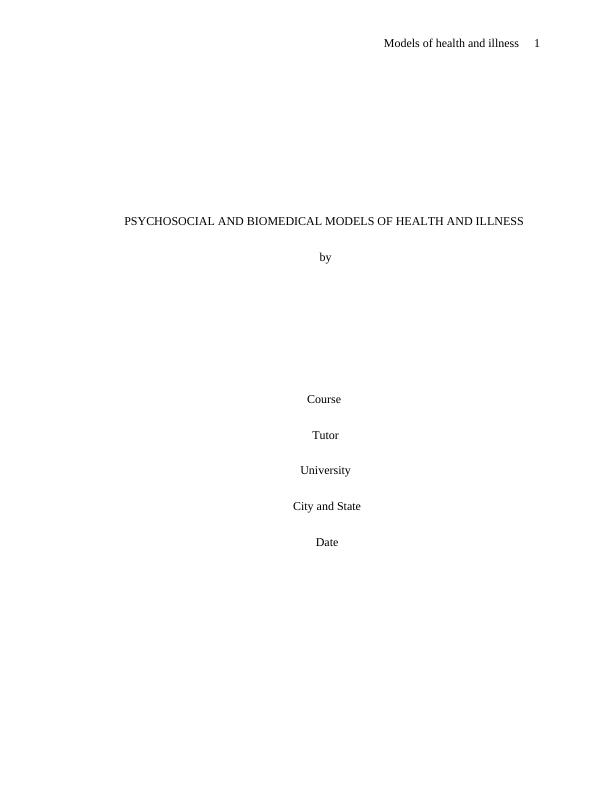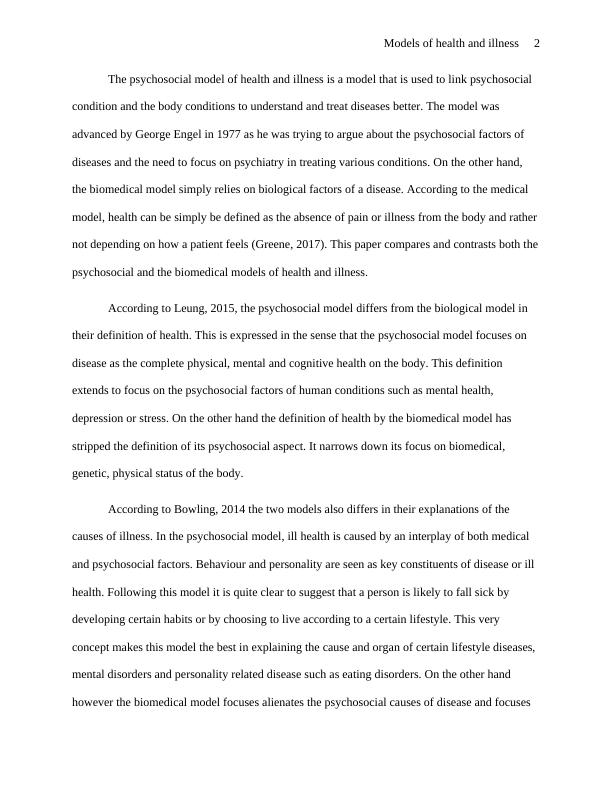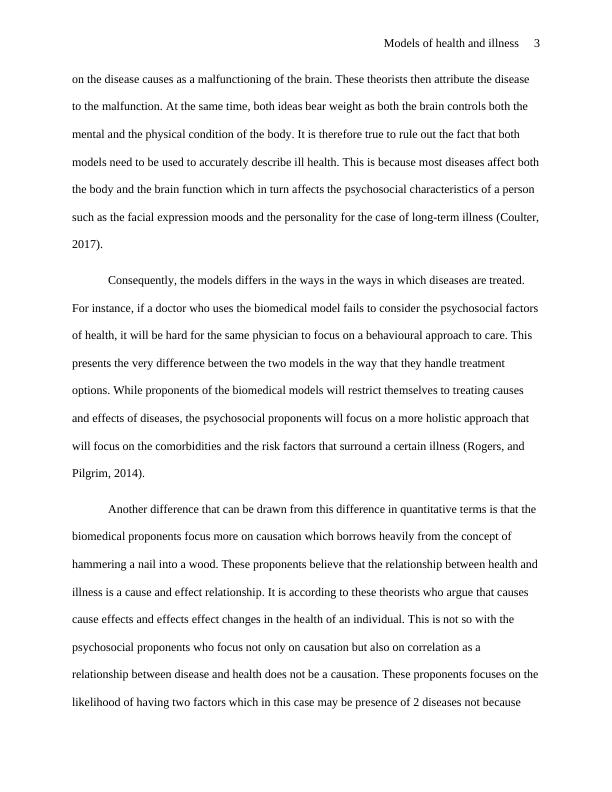Psychosocial and Biomedical Models of Health and Illness
Utilize current research and studies on the health of differing groups to demonstrate understanding of how socio-economic class, gender, age, ethnicity, or disability all play a role in the health of individuals and groups.
8 Pages2133 Words372 Views
Added on 2023-05-30
About This Document
This paper compares and contrasts both the psychosocial and the biomedical models of health and illness. The psychosocial model of health and illness is a model that is used to link psychosocial condition and the body conditions to understand and treat diseases better.
Psychosocial and Biomedical Models of Health and Illness
Utilize current research and studies on the health of differing groups to demonstrate understanding of how socio-economic class, gender, age, ethnicity, or disability all play a role in the health of individuals and groups.
Added on 2023-05-30
ShareRelated Documents
End of preview
Want to access all the pages? Upload your documents or become a member.
Psychosocial and Biomedical Models of Health and Illness
|7
|1948
|50
An introduction to health and social care: Assignment
|7
|1935
|217
Mental Illness and Mental Health Recovery
|10
|2976
|384
The Biomedical Model of Mental Health and Competence of Workers
|11
|3529
|357
Understanding Health Illness and Well-being
|9
|2636
|260
Psychological and Biomedical Model in Health and Social Care
|7
|1910
|35



